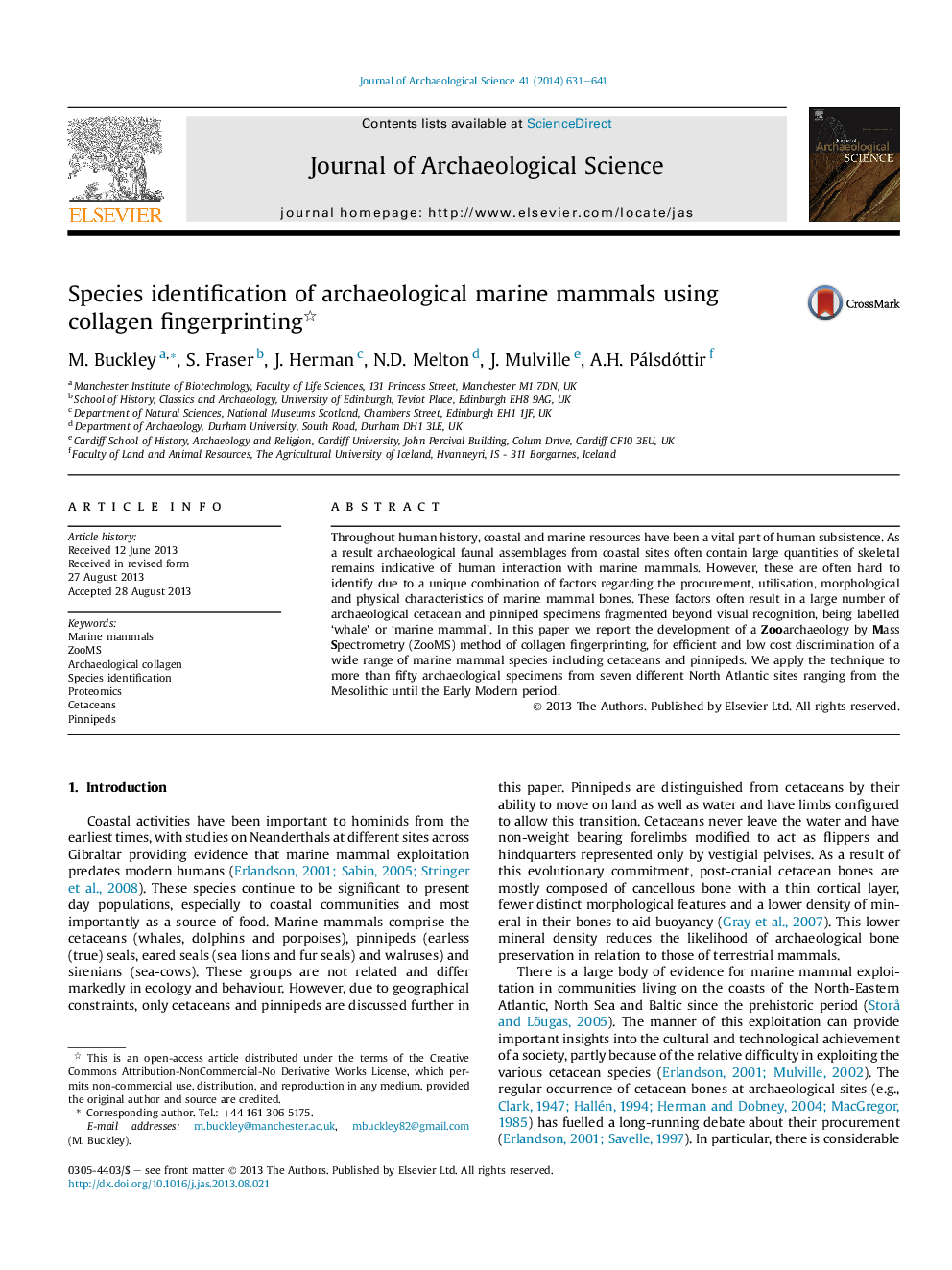| Article ID | Journal | Published Year | Pages | File Type |
|---|---|---|---|---|
| 7444078 | Journal of Archaeological Science | 2014 | 11 Pages |
Abstract
Throughout human history, coastal and marine resources have been a vital part of human subsistence. As a result archaeological faunal assemblages from coastal sites often contain large quantities of skeletal remains indicative of human interaction with marine mammals. However, these are often hard to identify due to a unique combination of factors regarding the procurement, utilisation, morphological and physical characteristics of marine mammal bones. These factors often result in a large number of archaeological cetacean and pinniped specimens fragmented beyond visual recognition, being labelled 'whale' or 'marine mammal'. In this paper we report the development of a Zooarchaeology by Mass Spectrometry (ZooMS) method of collagen fingerprinting, for efficient and low cost discrimination of a wide range of marine mammal species including cetaceans and pinnipeds. We apply the technique to more than fifty archaeological specimens from seven different North Atlantic sites ranging from the Mesolithic until the Early Modern period.
Related Topics
Physical Sciences and Engineering
Materials Science
Materials Science (General)
Authors
M. Buckley, S. Fraser, J. Herman, N.D. Melton, J. Mulville, A.H. Pálsdóttir,
